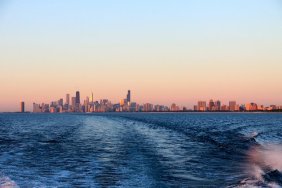 Continuing our series on the practice of Leave No Trace, today we’ll take a look at the impact that building a fire has on an ecosystem, and what you can do to minimize any negative effects.
Continuing our series on the practice of Leave No Trace, today we’ll take a look at the impact that building a fire has on an ecosystem, and what you can do to minimize any negative effects.
This first piece of advice may surprise many of you, but it’s actually the surest way of reducing the potential for adverse ecological affects from fires: Don’t build a fire. Instead, if you need to cook food at your campsite, use a small backpacking stove. If you don’t have one, get one. Stoves cook your food quicker than a campfire and they don’t leave charcoal scars or blackened rocks behind when you leave. You can find a variety of camp stoves at your local outdoor retailer, most of which use fuel such as alcohol, propane, or butane.
When it comes to needing light, you can use a flashlight or even a candle lantern instead of building a fire. If you do use candles, though, be sure to clean up any wax drippings.
If you need to build a fire, try to make it as small as possible, and be sure to use established fire rings. If there is no fire ring, then keep your fire contained in a fire pan, or build a mound fire to protect the area from lingering old coals and blackened rocks. To keep the fire to a smaller size, use small pieces of dead wood (thinner than your wrist).
Don’t break or saw off branches from any trees—living, dead, or fallen. Only use wood that you find on the ground. Furthermore, don’t peel the bark off trees for use as tinder. It takes many years for the tree to heal from this.
When it’s time to leave, be sure to remove any unburned trash from your fire ring that won’t completely burn up, such as foil or bottles. Scatter your leftover cold ashes over a large area away from the campsite, too, especially during dryer seasons. Embers or wayward sparks can wreak havoc in no time when there are dry leaves and pine needles lying around.
Before you even think of building a fire—heck, before you even set foot on the trail—make sure you’re allowed to do so. Some parks don’t allow fires, or only allow allow fires within designated areas. Make sure you’re familiar with the regulations for the area you will be visiting.
Obviously, fires are a big part of the outdoors for many of us. However, if you’re really trying to minimize your presence as much as you can, then refrain from building a fire if you can help it. The tips outlined today provide great alternatives to building a fire, as well as advice for keeping your fire small and manageable if you do need to build one. Keep them in mind the next time you hit the backcountry!








